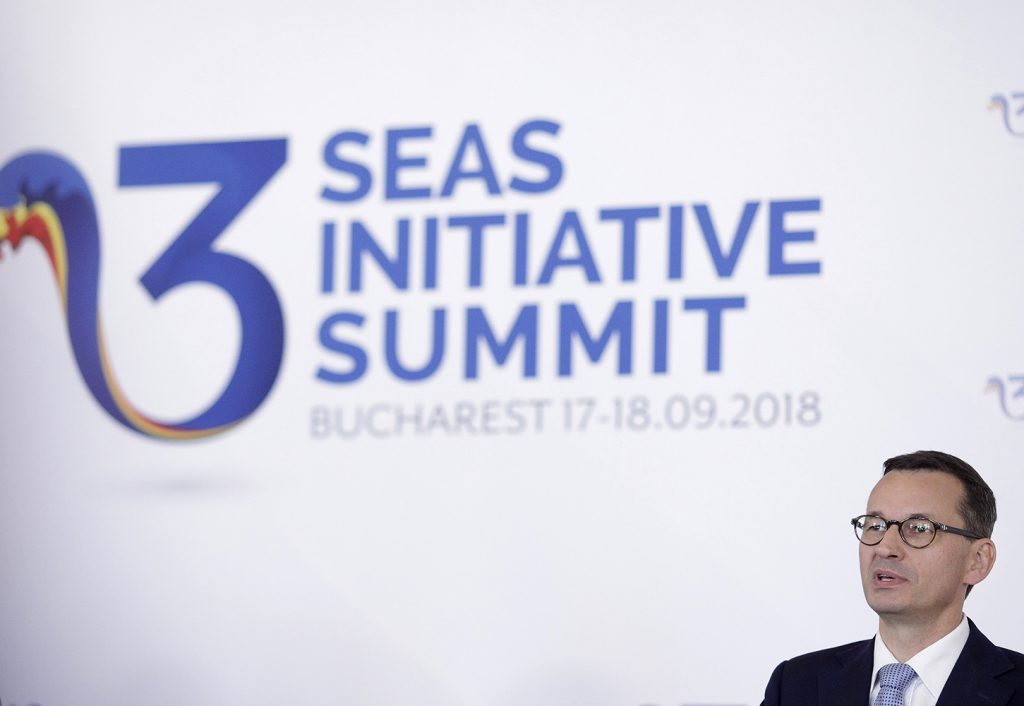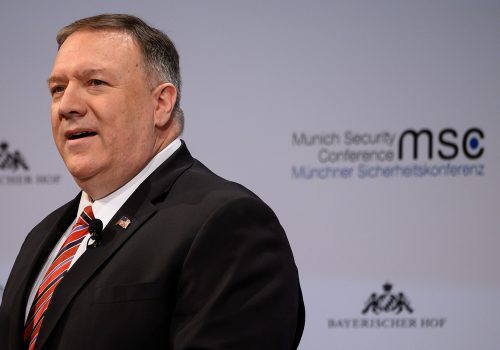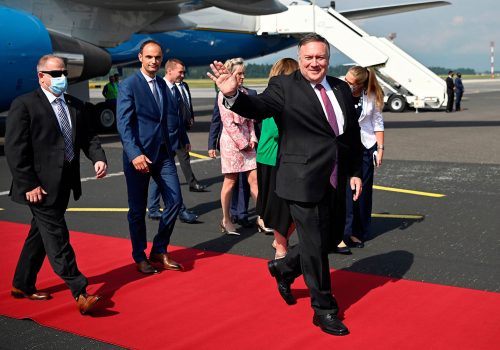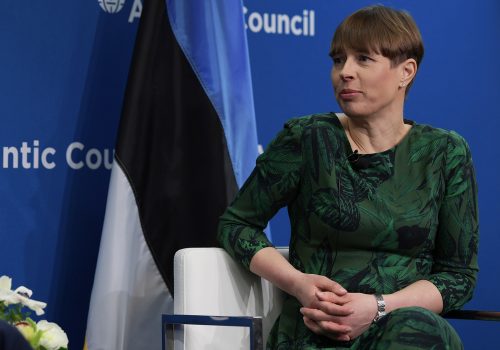Buoyed by a new commercially managed investment fund and a $1 billion pledge from the United States, leaders from the Three Seas Initiative will convene for a summit on October 19 to move the project into its next stage. As Three Seas leaders look to attract more international investment—both governmental and private—for the initiative, International Monetary Fund (IMF) Managing Director Kristalina Georgieva argued on September 28 that the completion of cross-border infrastructure and energy projects throughout Central, Eastern, and Southeastern Europe “can be a boost” to Europe’s economy and should be part of a strategy to counter the economic harm consequent to the coronavirus pandemic.
The Three Seas Initiative aims to help close the development gap between the twelve EU member states situated between the Baltic, Black, and Adriatic Seas, and the rest of the EU by promoting investment in cross border energy, transport, and digital infrastructure, specifically developing links that flow north and south, to go alongside existing east-west routes. The Three Seas project will be incredibly important, Georgieva argued, because closing the development gap with the rest of the European Union will likely cost Three Seas countries “between 2 percent and 3 percent of [gross domestic product] annually,” necessitating a mechanism to attract significant private investment to the region.
Georgieva was joined in an Atlantic Council event by Estonian President Kersti Kaljulaid and European Commissioner for Energy Kadri Simson. Kaljulaid stressed the need for private investment to “complement” what other national governments and the European Union are already doing, while Simson added that the EU’s success in meeting its climate change goals will be dependent on projects like the Three Seas Initiative.
Here’s a brief look at what Georgieva, Kaljulaid, and Simson said about the developing Three Seas project and its importance for Europe’s economic and energy future:
Absorbing the COVID blow:
- Lost years: As economic losses from the COVID-19 pandemic mount globally, Georgieva highlighted that the economic slowdown has been a particularly “heavy blow” for Central and Eastern Europe, a “region that has made remarkable progress” in economic growth and governance over the last two decades. Before the crisis, she explained, the region enjoyed an average of 3 percent annual growth in real income, “two and a half times the per capita growth rate” of the fifteen western EU member states (EU15). But she warned that COVID has dented this momentum, effectively starting “to erase three years of economic progress.”
- Development gap remains: Georgieva spoke on the heels of a new IMF report (“Infrastructure in Central, Eastern, and Southeastern Europe: Benchmarking, Macroeconomic Impact, and Policy Issues”) which outlines the persistent economic gap between the EU15 and the newer members of the EU. The report notes that there continues to be a significant gap between the region and the rest of Europe in energy infrastructure, digital connectivity, and physical transport links. “To close this gap relative to the EU15 by 2030,” Georgieva explained, “would cost countries in the Central, Eastern, and Southeastern region, between 3 percent and 8 percent of GDP annually.”
- Investment can provide “a boost”: Despite the cost, Georgieva assured that closing the gap was key to the region’s growth going forward, and could be the boost needed to help spur a post-COVID recovery in Europe. “For each 1 percent of GDP spent on infrastructure, output can increase by .5 or .75% in the short run, and by 2-4 percent in the long run,” she explained.
Private investment with firm political support:
- Private investors needed: But the large sums required to close the infrastructure gap means governments cannot simply foot the bill themselves, Kaljulaid explained. Three Seas countries and the EU have invested heavily in the region but “private capital has been somewhat fading from the picture” in recent decades, she said, necessitating a focus on coordinating new investment through the Three Seas Initiative. Georgieva agreed that “without the private sector, it is just not possible to effectively close this gap,” and stressed the need for regional governments to strengthen their governance over infrastructure projects in order to attract investors.
- Focus on investment fund: The need for private capital spurred Three Seas leaders to launch an investment fund earlier this year, which Kaljulaid stressed would be “transparent” and “impartial.” The central fund will allow investors to provide capital to all of the Three Seas countries, with the money used to fund viable cross-border projects. She explained that leaders decided to let a capital management firm “run the fund according to the rules of the market” to ensure that the “choice of the projects actually will be impartial…there is no political influence but on the other hand there is strong political support.”
- An attractive opportunity: While some investors may have been hesitant in the past to engage in the region, Kaljulaid highlighted the incredible potential the region provides. “We are 102 million people, this is a huge market,” which is “the fastest growing part of the European Union.” While cross-border projects will certainly face implementation challenges, she assured investors that all of the Three Seas countries’ inclusion in the EU single market means that “cross border investment in the region should be a relatively doable [and] easy to find,” especially as these countries share regulatory environments through their EU membership. Georgieva agreed, noting that “with low interest rate environment, long term investors are desperately looking for opportunities to invest in long term projects with good return,” and they should find considerable interest in the Three Seas projects.
- A clearer commitment from Washington?: The United States demonstrated its support for the Three Seas Initiative in February when it announced a $1 billion commitment to the Three Seas Initiative through the International Development Finance Corporation, but Kaljulaid cautioned that “we haven’t yet heard [a] real affirmation from the United States that they will really be now rewarding our effort with also formalizing their contribution.” The United States will participate in the October summit, and Kaljulaid said that a clearer US commitment “would be an important achievement for us and I would say would seal the fate of the Three Seas Initiative.”
Facilitating a green future:
- Three Seas vital for European Green Deal: Simson argued that the Three Seas projects fit perfectly into Europe’s plans to transform its economy in the face of the climate change emergency. “The aims of the Three Seas Initiative and the goals of EU policy: they are complementary,” she said. Earlier this month, European Commission President Ursula von der Leyen unveiled strengthened climate targets for the European Union, including increasing the EU’s goals for cutting emissions to 55 percent by 2030. Reaching this goal, Simson said “means taking actions in all sectors,” and the EU knows that “transforming Europe’s energy and transport systems will be crucial to our success.”
- Interconnections and green energy infrastructure: Simon highlighted that many projects on the Three Seas list are also EU funded projects that have increased importance for the EU’s energy transformation, including off-shore wind, hydrogen production, railway connections, and gas pipeline interconnectors. “To achieve our climate-related targets,” she said, “we do need better connected energy markets, we need cross border interconnections, and we will urge our member states to prepare these types of initiatives.”
Further reading:
Image: Poland's Prime Minister Mateusz Morawiecki speaks during the Three Seas Initiative Summit in Bucharest, Romania, September 18, 2018. Inquam Photos/Octav Ganea via REUTERS



